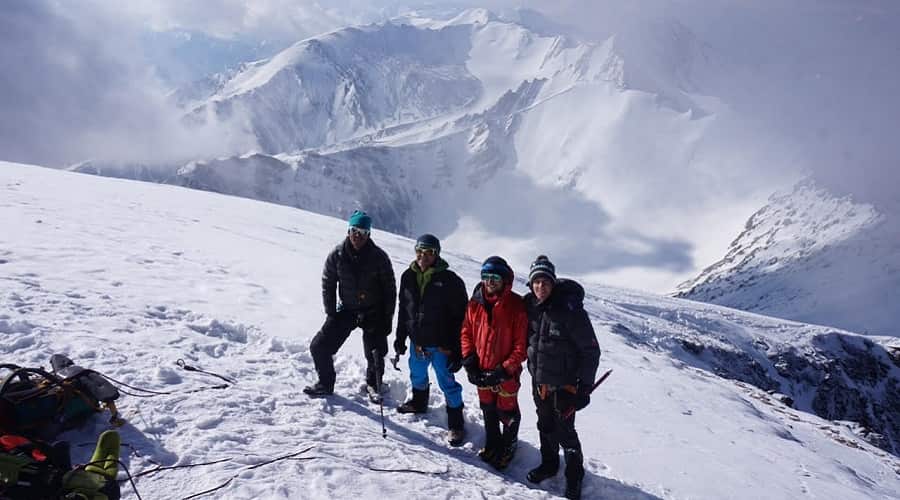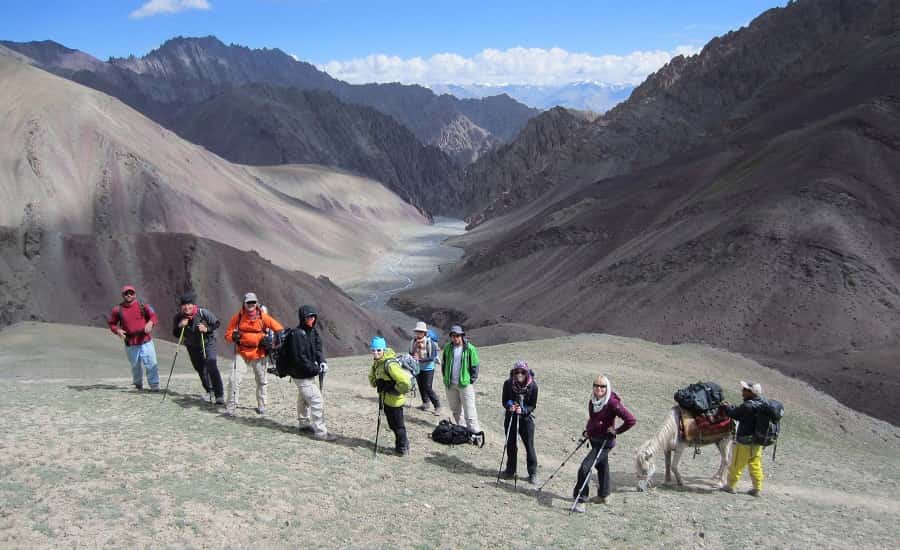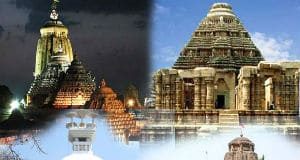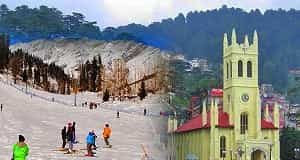Stok Kangri Climb (6153m), Ladakh
About Stok Kangri Trek
How high have you ever dreamt of soaring or climbing or floating up the altitude in your dreams? The Stok Kangri Trek, at (hold your breath) 20,500 feet ie 6,153 m is the highest summit that one can trek up to in India. The allure of scaling the magnificence of the terrain that the Himalayas offer draws several venturesome travelers to the Stok Kangri. It is perched atop the Stok Chu River valley near the village of Stok.
The Stok village is located in the Leh district of the state of Jammu and Kashmir (Leh tehsil, 17 km southeast of Leh town). The village houses its share of locations worthy of being visited, ancient structures such as the 600-year old Stok monastery and a nineteenth-century palace which is the current residence of the former royal family of Ladakh. According to the 2011 census of India, the village of Stok houses some 300 households. It can be explored for sight-seeing before we set out on the actual trek.

Stok Kangri is popular amongst trekkers as a trekking peak and is often climbed as an initial non-technical foray into high altitude mountaineering. Over the last few years, it has become extremely popular amongst trekkers even novices due to its non-technical nature. The peak is considered non-technical from July–August but becomes quite technical when the climax of winter hits. Illustrating the Himalayan terrain, Stok Kangri trek embraces deserted surroundings and offers its trekkers the opportunity to experience a different dimension. The entire trail has incorporated many ridges such that one feels the sudden change of scenery. During the winter season, this entire landscape looks stunning. The peak provides a dynamic view of Zanskar and the Indus Valley.
However, Stok Kangri trek does not come without its share of challenges and risks. The Stok Kangri, firstly, is not for the faint of heart, as it can stagger you physically. The essential factor is good acclimatization without which scaling such an altitude and such a terrain is impossible. At 20,500 feet, things can get very hard.
Despite its relative ease, the peak presents the daunting risks and challenges of a trekking expedition. Acclimatisation in Leh, before attempting the trek/climb and altitude acclimatization during the ascent, is essential. The biggest obstacle at such altitudes is rarefied air, which can cause acute headaches, nausea and other symptoms of altitude sickness even in the most physically fit of all climbers. There have been a lot of professional and experienced climbers criticising the enthusiasm of novices or inexperienced trekkers who set out to climb the Stok Kangri.
Facts
At 20,500 ft, this peak is the highest trekkable summit in India. It poses a great set of intimidating challenges. Acclimatization, as mentioned above, is the most important of all factors, as that ensures one’s tolerance and bearability factor when it comes to the rarefied air. It is also very surprising how this acclimatization is done only in the mountains of Ladakh, which at 11,000 ft are a good 9000 ft short of what one sets out to conquer in climbing Stok Kangri. One’s capacity to acclimatize there does not predict one’s capacity 9000 ft above that. Several people are hit by AMS or nose-bleeding and turn back halfway through.
The landscape is filled with the magnificence that does not fail to awe but it does not remain without posing challenges that test one’s ability to endure physically strenuous challenges. All of your trekking efforts will be worth, the time you reach the peak, You will look at the valley below and be filled with joy.
Important Factors Regarding Difficulty
Then, to illustrate what exactly makes trekking this peak difficult, I will state a few factors.
First of all, and the most evident one, is the problem of a high altitude. An altitude that surpasses 12,000 feet can induce AMS symptoms in a trekker. It dries the respiratory system out and puts pressure on the lungs. At Stok Kangri trek, each of the resting camps can be found above this elevation. The base camp itself is stationed at an intimidating 16,300 feet. And here again it is to be specified, that acclimatization is literally the essential factor in easing the passage of oneself through the trek.
The second factor is the unforgivably cold, freezing wind that cuts through the skin. When trekking towards the summit on the fourth/fifth day of the trek, a major obstacle is a glacier spanning a few kilometers that causes a huge hindrance. Several trekkers tend to drop out when moving through this stretch because of the piercing cold wind which consumes the open terrain at sub-zero temperatures.
The 70-degree gradient of inclination on summit day is a challenge for everybody and requires great levels of physical fitness and to add to this is the rigid ice and snow that decorates the glacier which hinders one from establishing a firm grip.
Climbing the Stok Kangri is incentivized by the pictures and ideas of the beautiful landscape that one can behold on reaching atop but the journey is also tough. However, if certain things are taken into account and practiced along with great endurance and good physical fitness, the Stok Kangri trek should be relatively easier. Also to be considered is the fact that it is not just the ascent but also the descent that is to be taken into account. For once one has reached the top of the mountain, there is the coming back part, which is believed to be tougher.
Tour Itinerary

Day-1 Arrive in Leh
The Stok Kangri trek is initiated with the arrival to Leh. You can reach Leh from Delhi by taking a flight or by road. Travelling to Leh by flight is a better option as it will save you a lot of time. By road, one needs to go to Manali or Srinagar, which doubles the ETA, hence taking a flight is recommended. A day has to be spent in Leh acclimatizing (more, if advised). Trekking in Leh is one of the best options for trekking in India.
Day-2 Leh (Acclimatization Day)
On the second day, as you acclimatize you can take in the natural and cultural gifts that Leh offers. This can be considered as a day to get knowledgeable about the city and habituated into the weather. Leh is a rich place culturally. Several monasteries adorn the place that one can visit. They are located in and around the town. Therefore you would get enough time to go around the place in a day. One can have an overnight stay in Leh. The hotels are effortlessly reachable and their rates are realistic too.
Day-3 Leh to Chang Ma via Stok Village
It’s one of the best locations that you would have seen when you’ve decided to take Stok Kangri trek. Trekking in Leh is a thing of the dreams. It is a heavenly feeling trudging through the landscapes of Leh. This is a day consisting of a great drive. The day 3 begins with a short drive to Stok village. As the drive from Leh to Stok begins, one sees the most exotic and picturesque scenery ever. The drive to the Stok village is an adventurous one and is painted with the lush green color of trees bursting with foliage. The weather is suitably amazing for the summer season.
The Stok village falls to the south of Leh and it is well known for a royal palace where the former royal family resides. The newly crowned king of Ladakh region resides in Stok. There’s also a small museum within the palace that has exquisite and spiritual artifacts. This is the day when you trek to Chang Ma. Stok Kangri Trek may be bit tricky, but you will love to go through the delight of a snow diving. You’d love to spend the night during your overnight stay is in tents within an open terrain.
Day- 4 Chang Ma (13087 ft.) to Mankorma (14200 ft.)
The whole Stok Kangri trek passes through the grey landscape of Ladakh. From Chang Ma, the trek goes up to Mankorma which stands at 14,200 ft. Finally, the real elevation begins. This day will show you the real beauty of Ladakh and explains why Ladakh is known as the cold desert. It is a fairly easy trek along with the river and the stay overnight is enjoyable.
Day- 5 Mankorma (14200 ft.) to Basecamp (16300 ft.)
A few hours of trekking and one arrives at base camp which itself stands at a whopping 16,300 ft. This exotic base camp is a pleasurable place which lies in the area covered by grasses and mosses. There are several water bodies in the form of lakes and water streams in this section. There are some beautiful peaks like Golap Kangri, Parcha Kangri, and some others. It is advisable to take rest in the base camp if the group is to be hale and hearty physically for the activities of the next days. You would get sufficient time to familiarise to the weather conditions and to explore this location. This is extremely essential because, in the days to come, you would find a great change in the climate as the air becomes greatly rarefied and one can suffer from a lack of oxygen supply.
The overnight stay would again be arranged in tents. Ensure that you have packed enough warm clothes to face the falling temperature of the land.
Day- 6 Rest day + training day
This day is a cool day for all the Stok Kangri explorers. You would enjoy the time for moving around and becoming familiar with the place, its landscape, and other factors. It is most importantly a day to train for the upcoming trek and to know the risks and challenges that one might run into in the course of the trek. Your trek leader and team director would guide you through recent changes in the terrain. One needs adequate knowledge and experience to go around the mountains as one might face situations where you have to trek in the sinking snow with no footage-grip. You would be sinking up to your knees.
Therefore it is quite important for you to know about climatic conditions and upcoming difficulties. It is also a day when you would be taking good rest so that you are prepared for the excursion coming up. The overnight stay here will be in camps or tents. By this point of time, you will probably be familiar with the weather and surrounding conditions.
Day- 7 Base camp (16300 ft.) to Stok Kangri (20080 ft.) back to base camp
You have to wake up around 12.30 AM for the Stok Kangri Summit attempt. Technical gear will be distributed to everyone. Start walking around 2:00 AM. En-route you will cross the glacier and there will be several steep slopes and ridges. This climb is a long one. It will take at least 9 to 10 hours to reach the peak. The summit offers a 360-degree view of the region. The wide view and open terrain will give you a great, overwhelming feeling. Towards the north will be Karakoram range. The Saser Kangri overlooks the skies in the north and all the Karakoram, and the Zanskar range from the south-west. Then, the descent to the base camp begins. There is again an overnight stay in the camps.
Day- 8 Base camp to Leh
With a 6000M peak to be completed, this trek will be a joyous experience. We start our day early to reach Stok Village. The return trek can be strenuous because of slippery slopes and snow. From Stok village, there is the road drive for Leh. The drive back can be one filled with nostalgia as you recount the memorable experiences from your time on the expedition. Arrival in Leh by evening. Check into the Guest House/Hotel.
Day- 9 Departure From Leh
This day marks the end of the trip in the morning. You will be required to check out at Hotel around 10:00 AM.
You can get onto a direct flight to Delhi from Leh. On the other hand, if you plan to explore other spots in Ladakh, keep a couple of spare days in your Itinerary.
Transportation
Transportation from Leh to Stok village will be by car or jeep or a mini-bus depending on the number of people in a group. Even the transport to the Stok Chu to begin the ascent will be by car/bus.
How to Reach
By Air
Jet Airways, Go Air and Air India provide daily flight service between New Delhi and Leh. In the summertime, the flight services might even be supplied two times per day. But for the winters, you need should reserve your tickets well beforehand, this may even decrease the costs. You’d like the flight because you’d fly over several untouched locations and even a few mountain ranges. The aerial view is fascinating and gives a great start to your tour.
By Road
The road from Manali to Leh is open only in the summers. The road trip may take you 2 days, but based on the weather conditions, the travel may also extend to 3 or even 4 days. It’s also advisable to ensure you carry at least 2 spare tires if you are traveling by your own vehicle. If traveling by bus then, a fantastic advice is to take a sleeping bag along with you, since the bus can stop in the middle of nowhere to your overnight stay. Another route to Leh via Srinagar also takes around two days.
Advisory
There are several things to be cautioned about. The first thing is the weather. It transforms quicker than the speed of light. A good sunny day in Ladakh can turn into a snowstorm without giving you time to prepare for it. If caught, a trekker without enough experience can be sent into a frenzy. On a trek like the Stok Kangri, you cannot afford to lose your mind and need to keep calm and face the obstacles. If you are planning for Stok Kangri Trek then, you must prepare yourself well for the challenges – and best method of preparation is to do research about Stok Kangri.
From time to time, it’s not worth taking a shot on the summit when the snow around the shoulder is slick. Judgement comes into play if you choose a call to come back from a tight snowy shoulder only 50 meters short of the peak. One should be aware of one’s medical conditions and health and physical fitness and only then attempt to climb this peak.
As Stok Kangri trek gains altitude rapidly, acute mountain sickness becomes the biggest threat here. Here, an individual ordinary at 16,000 feet may suddenly begin symptoms of acute mountain sickness, gaining just a second 500 feet in elevation. This may be a potentially deadly situation if timely actions aren’t taken. Judgment and expertise here are plays a vital role. Someone with expertise is nicely prepared and understands exactly what to do if struck by altitude sickness. They understand the emergency processes and take corrective measures.
Weather
The temperature varies from -20 to 10 degrees. During a sunny day, if the sky is clear, the temperature will be around 11 degrees, but during night temperature goes to -6. This is one of the toughest treks as temperature wise also. The months of July – August are the best months to plan a Stok Kangri Trek. During these summer months, the peaks of Stok region are covered with snow. Otherwise, it is seeped in a nearly or completely sub-zero temperature atmosphere. Currently, the weather conditions are at a freezing temperature of -20 degree Celsius.


